I’ve always liked having plants around, both inside and out. They make your house look good, smell good, and it’s always fun growing your own food. However, watering them every day is one of the biggest hassles and so time consuming. In the past, we’d either have to stand outside holding a hose for who knows how long or leave the hose on one plant and constantly have to go out to move it. One day we decided there had to be a better way and found one! Now we’re going to show you how to install soaker hoses in your garden.
Last year Kristen’s mom Linda got us these great hydrangea bushes for the front yard. Kristen loves the look of hydrangeas and the upkeep is pretty easy so I was all for them.
Since we got them in the early fall of last year it didn’t really make sense to work on any permanent watering solutions until now. We opted for the Element Soaker Pro System, which we got at Home Depot. We’ve used it before and worked really well. The hose has tiny little holes all through it which allows water to slowly drip out of it into the yard. (Basically, it means we can turn it on and forget about it for 30-60 minutes without causing a flood).
How to install soaker hoses
To setup and install the hose, all you really need is the kit that it comes with, a pair of scissors or utility knife, and a shovel.

Since the hose has to cross in front of our front path to get to the bushes on the other side, we also used a piece of solid garden hose and a utility knife to create a connecter piece between the two sides.
First, we stretched out the hose and looped it around each of the bushes on the right side. Just doing a straight line of the hose would also work well, we just want to make extra sure these plants weren’t going to get thirsty.
Prepping the garden hose
Since we have a pretty lengthy run by the front porch, we are using an old garden hose to cover that area so the walkway doesn’t get wet, too. We laid out the hose to determine how long the it needed to be and then we cut the old garden hose using a utility knife. We did this so it was the right length between the two garden areas – we didn’t want to have to bury more hose than we needed to.
Once we had the garden hose cut down, we used two hose mender/repair kits (one of each – male version and female version), for each end, so that it could screw into the soaker hose. There are male and female versions – so depending on what connector type you plan to use for the soaker hose, use the opposite for the garden hose.
The mender kit has two components, either a male or female screw attachment and a screw clamp. First, you should slip the screw clamp over the hose, but don’t tighten it yet. Second, push the screw end attachment into the hose as far as it will go. Finally, slide up the screw clamp so it wraps closely to the screw head and tighten the screw on the clamp until pretty tight.
Prepping the soaker hose
While I was prepping the garden hose, Kristen was cutting down the soaker hose to size using a pair of scissors and adding the connector pieces to each end which will allow the pieces of hose to fit together.
In the final steps we added an included end cap to the far end of the soaker hose (to stop the water from pouring out and forcing it through the soaker holes) and connected all of the hoses together.
Then we turned on the hose to make sure all of the connections were secure and there were no leaks. Now we have an easy way to water the plants without have to stand outside with a hose or pull out a sprinkler system.

(Please ignore the cicada shells, this was the aftermath of Brood X. We’re calling it fertilizer…)

For the most part, the steps on how to install soaker hoses ends there. All that is left now is to bury the green garden hose. You can also opt to bury the soaker hose under some mulch, but it’s not necessary – these steps are more for aesthetics.
At the very least, we wanted the green hose buried so…
The next day, Kristen got up early and dug a trench to essentially burry the green and just keep the black above ground.
Then everything got covered back up and now you’d never even know that it was there!
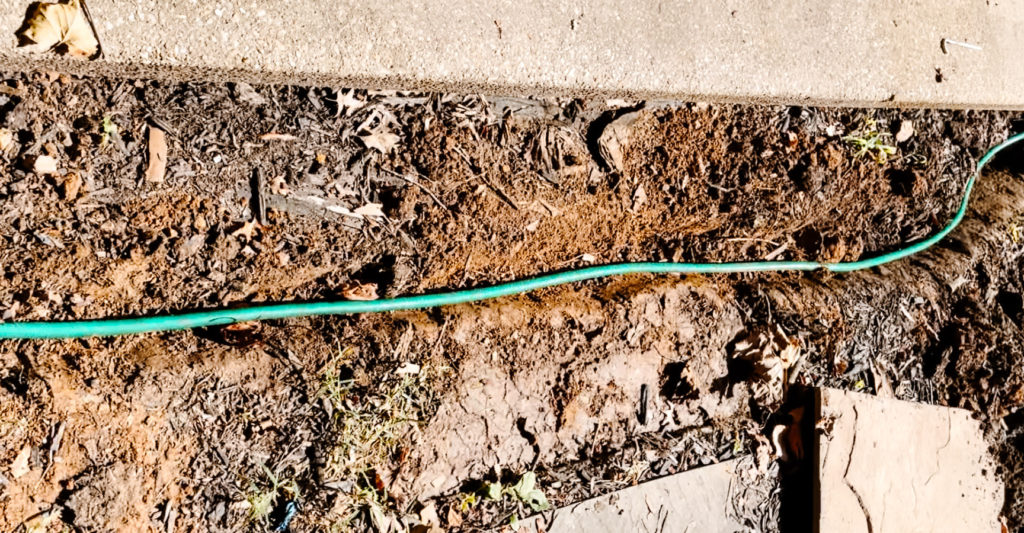 Now, we can add mulch to the flower beds to hide the soaker hose as well and have a hidden water system all summer! Do you have any other ways you know how to install soaker hoses! Leave a comment below and tell us how you did it in your yard!
Now, we can add mulch to the flower beds to hide the soaker hose as well and have a hidden water system all summer! Do you have any other ways you know how to install soaker hoses! Leave a comment below and tell us how you did it in your yard!

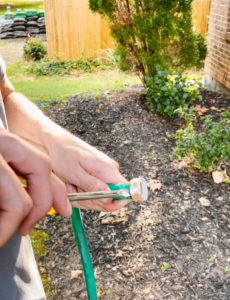
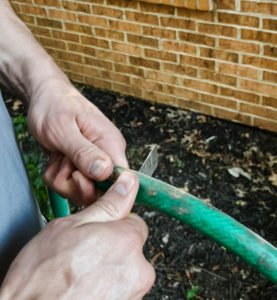
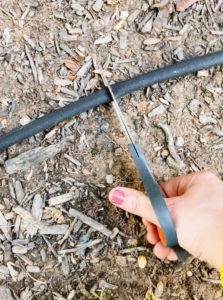

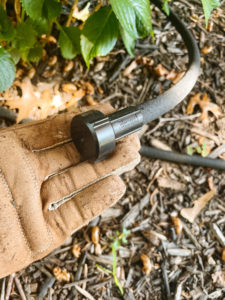





Leave a Reply